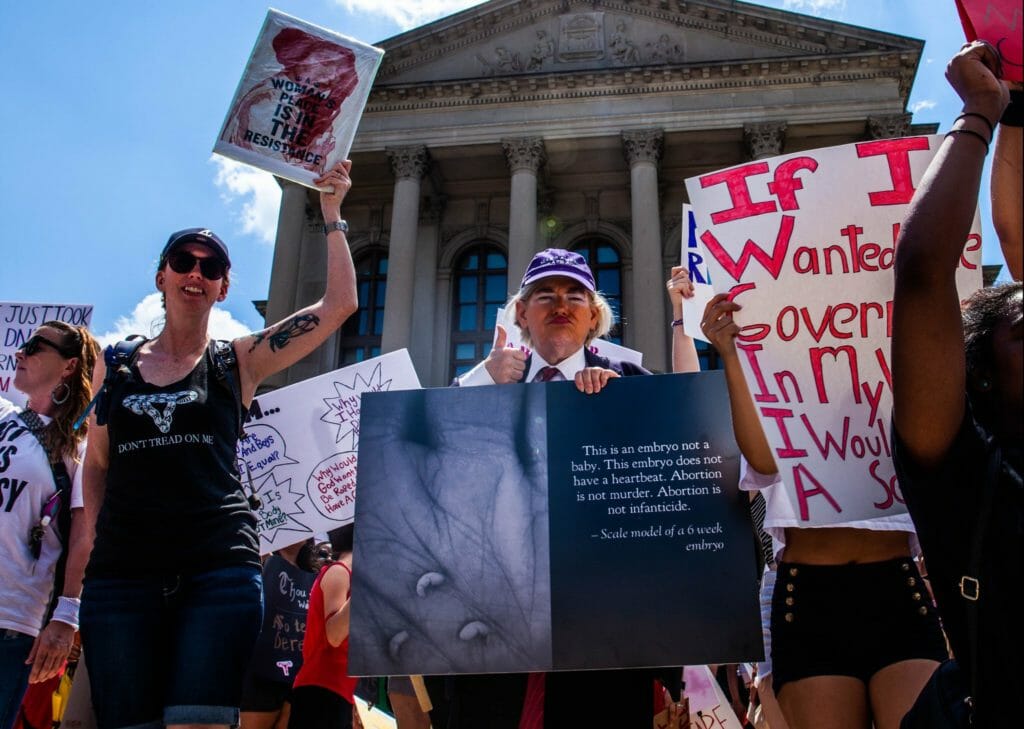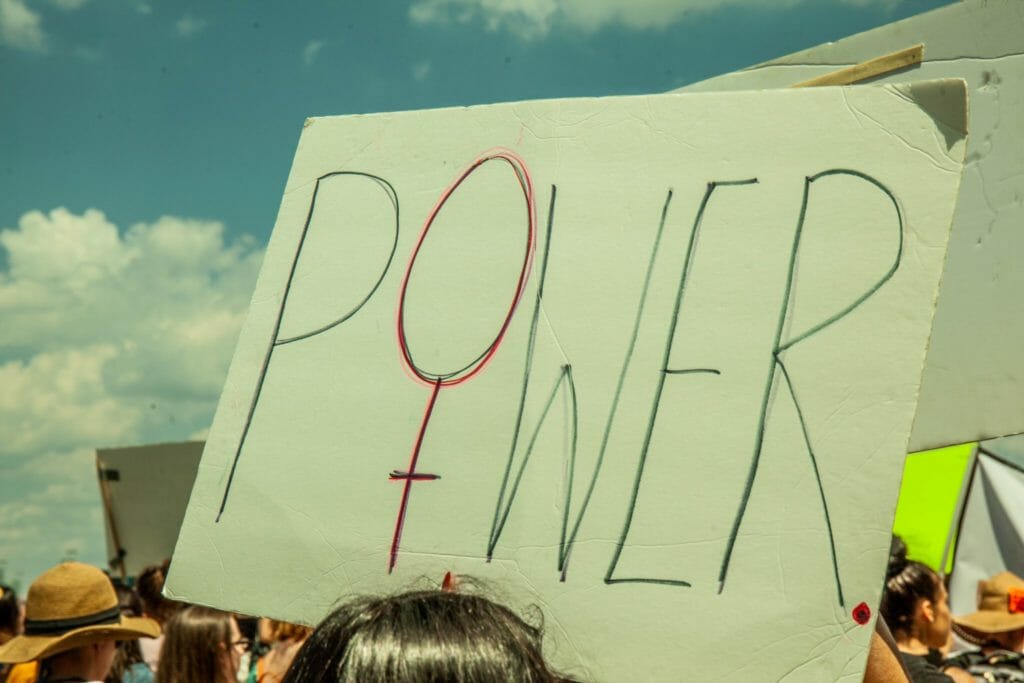In September 2019, Stephanie Hofeller had a random but overwhelming feeling that she should Google her estranged father and Republican strategist Thomas Hofeller, the man who gerrymandered America. Her quick search revealed that he had recently died in summer 2018, so Stephanie returned to her father’s home. While going through his things, she discovered several external hard drives filled with files of secret plans and strategies that the Republican Party had used to retain power as its voter base ages and its policies grew unpopular.
Stephanie did what any badass, defiant, rebellious adult would do in this situation. She dumped all the private files of her wicked father in a massive Google Drive folder and shared it online for journalists, activists, and all the world to see. At the center of these plans is a highly advanced gerrymandering technique fueled by census data, as well as a simple scheme to add a census question about immigration status that aimed to manipulate the census itself. This scheme did, in fact, come to fruition last year in the form of the citizenship question which, although ultimately struck down, created an atmosphere of fear around the 2020 U.S. Census.
First, what is gerrymandering? Gerrymandering is the process of redrawing the political lines of districts in a state to benefit a political party. For example, if you have a state where half the population votes Democrat and the other half Republican, these two halves can be spread out into the districts within the state. The concentration of each of these groups in each district can be manipulated by the shape of the district itself, with the effect of skewing the district toward a desired political makeup.
The two main styles of gerrymandering are known as packing and cracking. Packing is when a district is redrawn to isolate a political population into one single district; cracking is when a district is redrawn to break up a population and dilute it across several other districts.
What does this all, in reality, look like? Let\’s say you are a Republican gerrymandering in Atlanta, and you notice a large concentration of Democratic voters in the city. If you were packing, you could isolate this population into one giant congressional district, thus limiting all these voters to electing one congressional seat. This way, no matter how many votes the Democrats get, they are only voting for one seat. However, if you wanted to crack it, you could split it into several different districts that extend into areas like the suburbs and Buckhead, diluting those votes with Republican ones and drowning out the political potency of a Democratic mass.
Back to the exposed villain of this story: Thomas Hofeller, “the Michelangelo of Gerrymandering.” While sorting through the hundreds of thousands of Hofeller’s files, journalists at the Intercept were able to piece together a plan it seemed the GOP utilized to use racial data from the census to keep the South under Republican rule, even as its demographics change. The method used in the South has been to pack voters of color into majority-minority districts such as Georgia’s Randolph County and many others, limiting them to one or two congressional seats while ensuring that the districts surrounding them are majority white and Republican, therefore tilting the power balance strategically to the right.
Hofeller was practically a genius with his packing and cracking tactics, with his efforts in North Carolina being considered his masterpiece. In 2018, North Carolina was voting for 13 congressional seats, and in those elections, about 50% of the population voted Republican and 40% voted Democrat. Now it would make sense that this would come down to six seats for the Democrats and seven seats for Republicans; however, the Democrats only got three. Hofeller racially packed most of these votes into just three districts, restricting the influence of 40% of the state’s population. Therefore, no matter the number of votes, the absolute best the Democrats could come up with is three seats.
In a C-SPAN recording of a 2001 speech, Hofeller describes the benefit of this process, explaining that “usually the voters get to pick the politicians; in redistricting, the politician gets to pick the voter.” This idea spread across the states, and in 2010, Hofeller’s packing and cracking methods were used to consolidate Republican rule in Wisconsin, Florida, Texas, and others. Just as in North Carolina, while margins between Democrats and Republicans might be close, the Republicans have been able to tip the scales in their favor, consolidating their congressional power through aggressive gerrymandering tactics.
2020 is a momentous year for a lot of reasons, with the presidential election at hand along with other key local elections such as Georgia\’s Senate race. Additionally, we now have the privilege of enduring a potential epidemic with the coronavirus during a Trump administration while we continue, as a nation, to bury our heads deeper in the sand away from the climate change crisis we are all, as a human race, facing. Stephanie Hofeller\’s leaks revealed how dismal our system actually is and that our country really isn\’t based on a fair and free election system. It has been purposefully and intentionally modified to benefit one party and one group of people. And while we are not quite at the stage of revolution yet, we very well could be by the time November rolls around.
The fuel for Hofeller’s gerrymandering schemes is census data; the geographical location of racial and political groups is the very core of gerrymandering. Hofeller’s leaked files reveal that, to further the interests of the Republican Party’s power consolidation, he not only plotted to use census data to manipulate political districts, but he also attempted to manipulate the gathering of that data itself.
Some might recall the recent political battle over whether or not to include an immigration status, or “citizenship,” question on the 2020 census. There was a lot of hype last year considering the idea that this year’s census would include a citizenship question — something that hadn’t been included in the census since 1950. It’s clear in the Constitution’s definition of the census that it is not intended to count only U.S. citizens, but rather, every person that lays their head down to rest in the United States of America.
There was a lot of stirring and controversy in response to this, with Commerce Secretary Wilbur Ross and other Republicans claiming a citizenship question would actually help enforce the Voting Rights Act of 1965 (which was, to be clear, gutted by the Supreme Court in 2013 when they ruled racism no longer existed in America). Democrats clapped back in response, criticizing the question as being irrelevant and unconstitutional, only used as a tool to create an even greater atmosphere of fear around the census. Other critics, like some at this magazine, would go so far as to say this question is an extension of white nationalism, hoarding federal dollars for some people while alienating and harming others. It should also be considered that this question was introduced as early as January 2017 — the same time the Trump Administration began making moves on its “zero tolerance” immigration policies, which came to a head in summer 2019. It’s a lot to follow, especially with Trump in the White House and during an election year. While a question about immigration status may seem benign on its face, Hofeller’s leaked files revealed the sinister intentions behind it. And this was ultimately realized in a July 2019 federal court case decision that permanently blocked the Trump administration from including the citizenship question in this year’s census.

According to reporting by the nonpartisan grassroots organization Common Cause, the immigration question was designed with a specific purpose. Within the files his daughter released, Hofeller explores what would happen if legislative districts were drawn based on the total number of voters in the area instead of the total population of that area — a move that would favor Republicans. Because, as Hofeller himself put it, this would be a “radical departure from the federal one-vote-one-person rule presently used in the United States.” Further, he needed to devise a plan to achieve this goal without having to convince the Supreme Court to support the change. So, he came up with another way: if he could prevent immigrant populations from being counted at all, it would eliminate them from the redistricting process all together. This is antithetical to the spirit and purpose of the census, which is mandated by the Constitution to count every person in the U.S. where they live, regardless of citizenship status.
The next step in the plan was to pack the remaining voters of color into as few districts as possible. Playing around with district boundaries in order to disenfranchise entire populations is nothing new to American politics, but the science of perfecting it is especially disheartening. In a political landscape that is already overwhelmingly bleak, the idea that all mobilization efforts and hope for change are being strangled out by some bureaucrat drawing a line through your neighborhood, no matter how many people support a candidate or policy, is almost too much to bear. When one party can entrench itself in power that is separated from the support of the people, we no longer live in a democracy.
One place to start combating the strategies of Hofeller is to get an accurate census count; that would at least slow down the more ambitious attempts of outright erasure that was attempted with the immigration question. With that being said, ending gerrymandering altogether is a much trickier task and will take more than one election cycle and one census year. One effort that the democrats have come up with is to simply out-gerrymander Republicans. In fact, the Democrats have a plan. It’s called Advantage 2020 and they hope to fund it with 70 million dollars. We’ll see how that holds up in comparison to the Republicans’ Redmap 2020 that holds a spending goal of 125 million dollars.
Another attempt has been to place independent experts in charge of redistricting. Arizona has experimented with this idea, but by 2011, the independent experts had been accused of colluding with both parties. According to the New Yorker, one group had ties to Democratic Party officials and another was funded by the Koch brothers. One would think that the judicial system would be the most logical place to defend constitutional issues like gerrymandering, but Trump has stacked federal and circuit courts with hand picked judges and has had two appointments on the Supreme Court. We have seen that Trump is willing to push the Hofeller agenda by continuing to push the controversial citizenship question. The only hope for putting an end to partisan gerrymandering seems to be either state-level legislation or a federal congressional bill, both of which will require an enthusiastic and large scale movement of concerned citizens, or maybe a whole lot of pissed off people wearing yellow vests. (Wink, wink.)
The entire concept of partisan gerrymandering is vastly corrosive to a functioning democracy. It feels like one more category of governance where all scales are tipped against the people. When the ruling class is able to manipulate the very boundaries of its own power and reduce the effectiveness of public consent, maybe it\’s time to hit the reset button.
We are an independent, largely volunteer-based, women-led publication that provides free coverage to our readers. If you enjoy our work and want to join our mission, donate to help us support the artists and writers who contribute to our platform.




